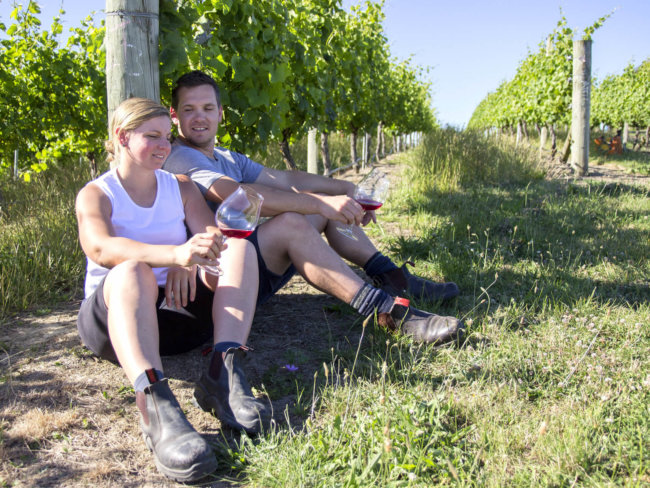Although Abel Gibson’s connection to the Barossa and tradition runs deep, his Ruggabellus label has given convention a good hard shake. Working with sites that enable him to preserve freshness by picking earlier, his reds see varying levels of whole bunch inclusion, and the whites undergo extended skin contact. Neither see any new oak. Aside from a straight syrah, blends are key here, with sites and varieties complexing the equation. Gibson took out both the Young Gun of Wine and People’s Choice award in 2012, which is the only time the two awards have been won by the same person.
Abel Gibson moved to the Barossa when he was two. As he says, “I have no recollection of life before this place.” And indeed, though he is a first-generation Barossan, the spirit and the history of the place runs deep in him. Back in the day, his father was a viticulturist for Penfolds, and a familiarity with and love of the land was almost a given, but it took a comprehensive tour of the world (not a winemaking pilgrimage, mind you) to drive that specialness home in a life-changing, life-affirming way: “I realised that I missed the things that I had grown up with here. The colour tones, the eucalyptus, the colour of the grass, the rocks in the summer… It’s something that is unique to here, quite mystical and enduring…”
Gibson has since worked with some of the Barossa Valley’s most treasured makers – Penfolds, Rockford, Chris Ringland, Charles Melton, Spinifex – but he never trained formally, so his approach leans on a combination of tradition and instinct. And while there is a deep respect for the craft and the wines of the established greats, his was never going to be a path of imitation. Gibson had his own view, his own things to say.
After he and his wife, Emma, launched their label in 2011, from the 2009 vintage, there was enough encouragement from what were quite eye-opening styles at the time – medium weight, fragrant, fresh – to go longer with the concept. So, in 2013, they purchased a 2-ha vineyard in Flaxman’s Valley, which they have lovingly returned to pristine health and ideal specifications. Today, fruit is sourced from the home vineyard, through established relationships with like-minded growers and from some leased and managed parcels.
Gibson tends towards the early for picking, while still trying to capture ripeness: “It’s so warm here, so it seemed natural to pick the grapes a little bit earlier and make wines that are succulent and freshen you up. These lighter, more aromatic wines work really well at the dinner table. I think that’s where wine should be drunk. With friends, with food, in Australia and all over the world.”
Fruit is harvested according to the biodynamic calendar and racking and bottling according to moon cycles. From 10% to 100% whole-bunch fermentation is employed for the reds, and various levels of skin contact for the whites – sometimes near to a year. No pumps are used in the winery, with all liquid moved by gravity. Ferments begin with natural yeasts and proceed without interference, and there is no new oak used. The key here, much like with his Barossa Valley contemporary Fraser McKinley, is in the art of bringing together small parcels of wines – varieties, sites, barrels – to weave a distinctly mesmerising whole.





